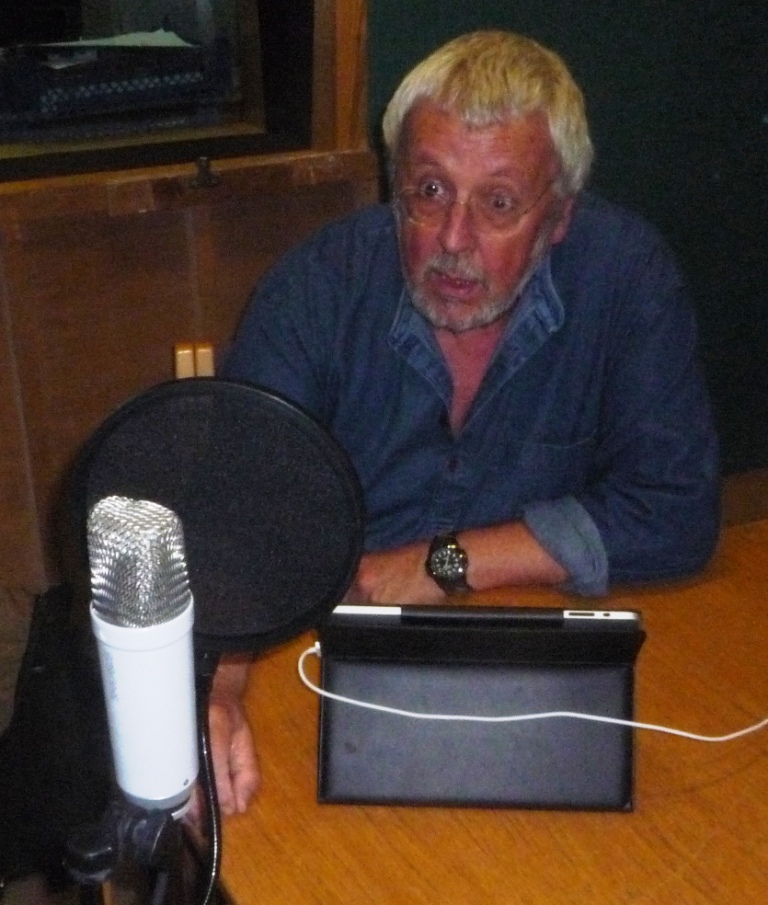On a sunny Wednesday in June 2011 in a makeshift recording studio somewhere in Cambridge, we were very pleased to welcome Terry Molloy back to the Darwin Correspondence Project for a special recording session. Terry, known for his portrayal of Davros in Dr Who and as the voice of Mike Tucker in The Archers, previously worked with us playing Charles Darwin in a dramatisation of the correspondence between Darwin and Asa Gray. Re: Design toured Britain and America in 2007-8, shedding light on how Darwin developed and justified his revolutionary theory of natural selection (a film of a performance is available).
This time Terry's task was to bring some carefully selected letters to life with his masterful characterisation of Charles Darwin. It was a long and full day at the microphone, resulting in Terry's interpretations of 23 letters. A significant proportion of the selection comprised Darwin's letters to women correspondents, who collected specimens and made observations to help him with his research (e.g. to Lydia Becker, 2 August 1863; to Mary Treat, 5 January 1872).
Click on the play buttons to listen to the letters.
Other female correspondents asked Darwin questions about the spiritual implications of his theories (e.g. to M. E. Boole, 14 December 1866).
Even the youngest female members of the Darwin family were not exempted from making observations, as exemplified by the letters to his Wedgwood nieces, Lucy ([before 25 September 1866]; 8 June [1867-72?]) and Sophy (8 October [1880]).
The letters cover a long time span from one of 31 August 1831 to his father seeking permission to go on the Beagle voyage, to a letter to C. A. Kennard written on 9 January 1882, only shortly before Darwin's death, about the equality of women and men.
One of the challenges was to recreate Darwin's voice at the various stages of his life, reflecting the many changes in pace and style from the youthful exuberance of the Beagle letters (e.g. letter to Caroline Darwin, 29 April 1836) to the more considered and tentative tiredness of the later years (e.g. letter to E.M. Dicey, [1877]).
Working with Terry brought home again the importance of tone in interpreting particular letters. How should one read Darwin's politely worded rebuke to St G. J. Mivart (21 April [1871]) for the inadequacies, as Darwin saw it, of his review of Descent of Man?
What was Darwin's state of mind, as he wrote the highly focussed and detailed barrage of reports and questions that led up to his 'confessing a murder' in his famous letter to J. D. Hooker, in which he admitted that he no longer believed in fixity of species [11 January 1844]?
And then there is the affectionate and self-deprecating, yet very precise set of instructions to his daughter Henrietta, who was proofreading a draft chapter of Descent (letter to H. E. Darwin, [8 February 1870]).
Audio of more letters can be found here.
We hope the recordings will increase enjoyment of the letters and make them more engaging.



